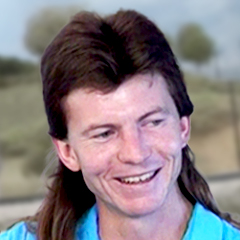
Operating Systems on the L&N
Rick RideoutRick Rideout’s L&N Henderson Subdivision houses miles of wire, command control detection circuits, signals, and a computer. Rideout views his computer as simply a system of relays with an on and off switch. The computer in his layout room automatically loads the programs and sets the railroad up. The computer’s interface is located under the Chicago staging yard with terminals from the railroad’s wires. These run to the input cards coming off the railroad, into the computer and back out to the railroad’s CTC machine, fast clock, or signals. The computer ties to the CTC panel which consists of 200 wires that leave the machine, runs up into the ceiling, then over to the computer and back. Levers on the CTC machine control different switches and signals on the layout. A code button then sends the command to the computer.
The CTC machine is an important part of the model for Rideout because it can make the layout look as close to the real thing as possible and can represent real machines. CTC can run preconditioning which can remember certain controls for a smooth run. Rideout uses the Dinitrol PSI control system on his layout, a user friendly system that has worked well for his needs. Under every main line track on each side of the risers runs bus wire. Every piece of rail is jumpered to the bus wire. Rideout does not super detail his cars because they don’t hold up well. Many people touch and pick up cars on the layout and maintenance would be too much for his to keep up with.
Rideout finds enjoyment in the operation of his railroad and feeds off the fun operators have when they run it. His goal is to make operation so enjoyable that operators forget the fact it is a model and believe it’s a real railroad. Some tips Rideout offers for starting out in operation include starting off small, teaming up with people more knowledgeable than yourself, and to not be afraid of mistakes because mistakes just make the model feel more prototypical. Find more videos on layout operations on the Model Railroad Academy website.

